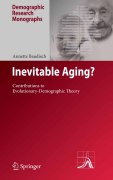
Aging is inevitable: this is gerontological dogma. And humans do inevitably grow old, which is probably why it seems so unlikely to us that other forms of life could escape aging. Escaping aging is not escaping death. Death is an inherent part of life, and it can strike any time. But the question is whether death necessarily becomes more likely as life proceeds. And it does not. The theoretical results in this monograph indicate that life provides alternative strategies. While some organisms will deteriorate over adult ages, for others mortality appears to fall or remain constant, at least over an extended period oflife after reproductive maturity. This is empirically observed especially forspecies that keep on growing during adult ages. Perhaps the diversity of aging matches the diversity of life. My thesis, the central insight of this monograph, is: to deeply understand why some species age it is necessary to understand why other species do not. Pathbreaking findings on aging opening a completely new field of research The author gets away from the human centered vision of life showing that aging in any organism does not necessarily correspond to deterioration and senescence Optimization models using sophisticated methods ofcontrol theory and dynamic programming INDICE: Introduction. Part I: Hamilton: Hamilton's Indicators of the Forceof Selection. Further Challenges. Part II: Optimization Models: Optimization Models Based on Size. An Optimization Model Based on Vitality. Directions for Research. Vitality Model - Appendix.
- ISBN: 978-3-540-76655-1
- Editorial: Springer
- Encuadernacion: Cartoné
- Páginas: 170
- Fecha Publicación: 01/01/2008
- Nº Volúmenes: 1
- Idioma: Inglés
